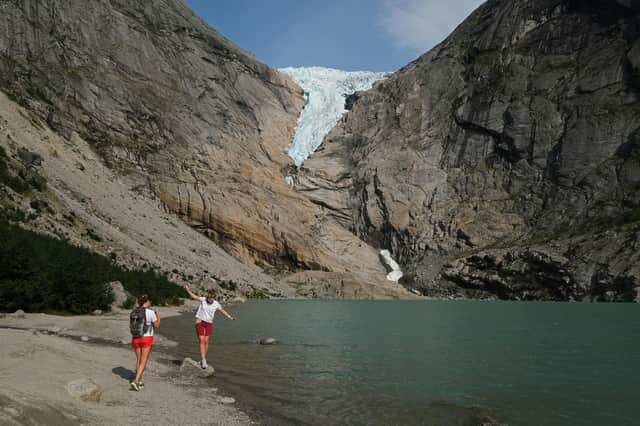COP26 climate change summit: Disappearing glaciers are acting like the canary in a coal mine. Will world heed their warning? – Scotsman comment


In total, an average of about 400 billion tones of ice have been lost from glaciers worldwide every year since 1994, according to Nasa.
In 1850, the US Glacier National Park in Montana contained about 150 glaciers. Today, there are about 25 and it is thought they could all be gone as early as 2030.
Advertisement
Hide AdAdvertisement
Hide AdIn Europe, the “vast majority” of glaciers are retreating, according to the European Environment Agency. “Glaciers in the European Alps have lost approximately half of their volume since 1900, with clear acceleration since the 1980s,” its website says. It is estimated the volume of these glaciers could reduce by up to 89 per cent by 2100.
While for some people, this may seem little more than a curiosity, for others it poses a profound threat to their way of life.
The Himalayas, Hindu Kush and Karakoram mountain ranges have a total of about 55,000 glaciers – containing more ice than anywhere outside the Arctic and Antarctic – that feed rivers like the Indus and the Ganges upon which hundreds of millions of people depend for freshwater.
A report by the World Bank published in June warned: “The loss of glaciers in the mountain ranges of South Asia will have serious consequences for communities and livelihoods across the region, both through immediate threats to water resources and, more broadly, through greater exposure to climate-induced stress.”
Glaciers are giving us a warning, acting like the canary in a coal mine. The question is, are we paying attention?
A message from the Editor:
Thank you for reading this article. We're more reliant on your support than ever as the shift in consumer habits brought about by coronavirus impacts our advertisers.
If you haven't already, please consider supporting our trusted, fact-checked journalism by taking out a digital subscription.
Comments
Want to join the conversation? Please or to comment on this article.
